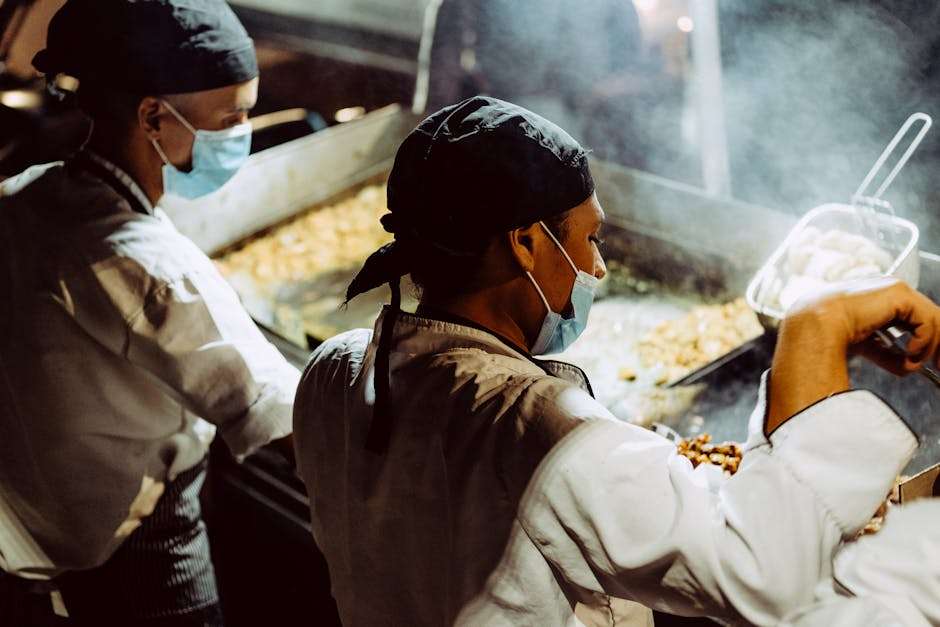How Culinary Arts Have Influenced Popular Culture
The world of culinary arts has long transcended kitchen walls to permeate every aspect of popular culture. From television shows to social media, the influence of culinary creativity is undeniable. In this blog post, we’ll explore the multifaceted ways in which culinary arts have shaped the cultural landscape we know today. ???
Table of Contents
1. Introduction
2. The Rise of Culinary Arts in Media
3. Food as a Social Media Sensation ?
4. Culinary Arts and Fashion ??
5. The Influence on Language and Slang ??
6. Conclusion
7. FAQs
The Rise of Culinary Arts in Media
The culinary arts have carved out a significant niche in the media world. From the early days of cooking shows like Julia Child’s “The French Chef” to the modern-day culinary competitions like “MasterChef” and “The Great British Bake Off,” food has become a staple of entertainment. These shows not only showcase culinary talent but also tell the stories of diverse cultures and traditions, making food a universal language that brings people together.
Cooking shows have created celebrity chefs who are now household names, such as Gordon Ramsay and Nigella Lawson. Their influence extends beyond the kitchen, impacting how we perceive and interact with food in our daily lives. ??
Food as a Social Media Sensation ?
In the digital age, food has become a social media superstar. Platforms like Instagram and TikTok have transformed dining experiences into visually appealing content. The hashtag #foodporn boasts millions of posts, showcasing dishes that are not only delicious but also aesthetically pleasing.
Food influencers and bloggers play a significant role in how trends spread. From avocado toast to rainbow bagels, these trends often begin online and quickly make their way into restaurants and cafes. Social media has democratized culinary arts, allowing anyone with a smartphone to share their gastronomic creations with the world. ??
Culinary Arts and Fashion ??
The intersection of culinary arts and fashion is more vibrant than ever. Designers have drawn inspiration from food, incorporating elements like vibrant colors and unique textures into their collections. Fashion events often feature elaborate culinary presentations, blurring the lines between the catwalk and the dining table.
Moreover, food-themed fashion accessories, such as donut earrings or pizza slice handbags, have become trendy, reflecting the fun and whimsical side of food culture. This fusion highlights how culinary arts influence our aesthetic preferences and personal style. ??
The Influence on Language and Slang ??
Culinary arts have also seeped into our language, with food-related slang becoming part of everyday conversation. Terms like “spilling the tea” or “bringing home the bacon” have culinary origins and are now widely used to convey various meanings.
This influence is not only limited to English but extends to numerous languages worldwide, showcasing the universal appeal and integration of food in communication. Such phrases often add flavor to our speech, making conversations more engaging and relatable. ??
Conclusion
From media and social platforms to fashion and language, the culinary arts have left an indelible mark on popular culture. As we continue to explore new flavors and culinary innovations, the influence of food on our cultural landscape will undoubtedly grow. Whether you’re a professional chef or a home cook, the world of culinary arts offers endless possibilities for creativity and connection. ??
FAQs
1. How have cooking shows impacted food trends?
Cooking shows have introduced various culinary techniques and ingredients to a broader audience, often setting or amplifying food trends as viewers attempt to recreate dishes at home.
2. Why is food so popular on social media?
Food is visually appealing and universally relatable, making it perfect for social media platforms. The ability to share and discover new dishes inspires creativity and community among users.
3. How do culinary arts influence fashion?
Fashion designers often draw inspiration from the colors, textures, and themes of food, creating collections that reflect the playful and vibrant nature of culinary arts.
4. Can you give examples of food-related slang?
Sure! Phrases like “spill the beans” (reveal a secret), “full plate” (being busy), and “piece of cake” (something easy) are all examples of food-related slang.
